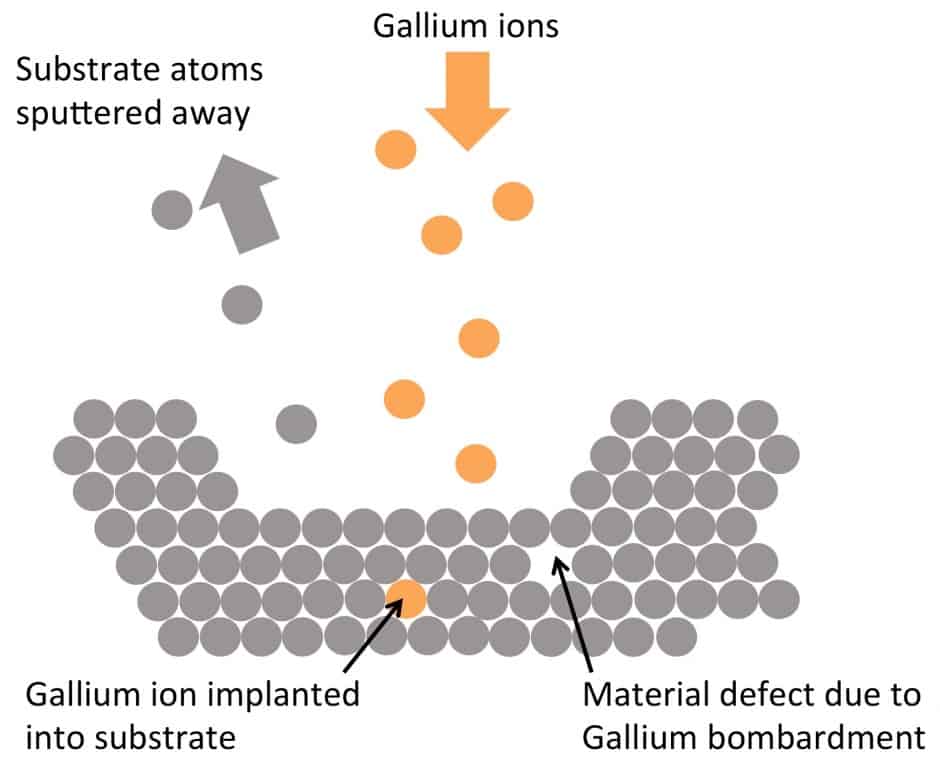Synchrotron sheds light on damaging impact of inspection technique
Focused Ion Beam Milling (FIB), a widely used technique that enables scientists to manipulate and study materials at the nano-scale may have dramatic unintended consequences, according to researchers at Oxford University.
FIB uses a tiny beam of highly energetic particles to cut and analyse materials smaller than one thousandth of a strand of human hair and has become an essential tool for a number of applications including microscopy, researching high performance alloys for aerospace engineering, nuclear and automotive applications and for prototyping in micro-electronics and micro-fluidics.

Above: schematic showing FIB in action (Credit: Oxford University)
Whilst the technique was previously understood to cause structural damage within a thin surface layer of the material being cut it was assumed that its effects would not extend beyond this thin damaged layer. However, the Oxford University research, published in Scientific Reports, reveals that FIB can in fact dramatically alter a material’s structural identity.
The team studied the damage caused by FIB using a technique called coherent synchrotron X-ray diffraction. This relies on ultra-bright high energy X-rays, available only at central facilities such as the Advanced Photon Source at Argonne National Lab, USA, with whom the Oxford team collaborated.
Register now to continue reading
Thanks for visiting The Engineer. You’ve now reached your monthly limit of news stories. Register for free to unlock unlimited access to all of our news coverage, as well as premium content including opinion, in-depth features and special reports.
Benefits of registering
-
In-depth insights and coverage of key emerging trends
-
Unrestricted access to special reports throughout the year
-
Daily technology news delivered straight to your inbox










Simulations show Optimal Design for Bladeless Wind Turbines
"an 80cm mast" Really? I'm short but that's only half my height! Do they mean 800cm?